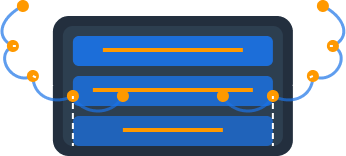Dynobase is Dead. Here's What to Use Instead

Dynobase is effectively abandoned. No updates since 2022. The GitHub issue confirms it.
If you’re still using it, time to move on. Here’s what actually works.
The Non-Negotiables
For production DynamoDB work, you need:
- AWS SSO that works - No copy-paste credentials every hour
- Multi-tab support - Because single-tab tools are a joke
- Query sharing - Your team needs to use the same tested queries
Here’s how the alternatives stack up:
Dynomate: Modern DynamoDB GUI Client
Built for real developer workflows with AWS profile integration, multi-session support, and team collaboration.
No account needed. Install and start using immediately.
- Table browsing across regions
- Flexible query & scan interface
- AWS API logging & debugging
Quick Comparison
| Tool | AWS SSO | Multi-Tab | Team Features | Cost | Still Alive? |
|---|---|---|---|---|---|
| Dynomate | ✅ Native | ✅ Real tabs | ✅ Git integration | $199 once | ✅ Active |
| NoSQL Workbench | ✅ IAM roles | ❌ Single tab | ❌ None | Free | ✅ AWS maintained |
| JetBrains Plugin | ✅ Profiles | ⚠️ IDE tabs | ❌ Local only | $3-7/mo | ✅ Active |
| DBeaver | ✅ Paid only | ✅ Multi-query | ✅ CloudBeaver | $10+/mo | ✅ Active |
| Retool | ⚠️ Setup required | ❌ Custom UI | ✅✅ Built for it | $10+/user/mo | ✅ Active |
The Options
1. Dynomate - Built by Developers Who Get It
What works:
- SSO login that actually starts the auth flow (no credential juggling)
- Real multi-tab interface (not fake tabs that reload everything)
- Git integration for query sharing
- Request chaining (use results from one query in another)
What doesn’t:
- Costs $199 (but it’s one-time, not monthly)
- Newer tool (but actively developed)
Bottom line: If you do serious DynamoDB work, this is the tool. The multi-tab support alone saves hours per week.
2. NoSQL Workbench - The Free AWS Option
What works:
- It’s free
- Good for initial data modeling
- AWS maintains it
What doesn’t:
- Single tab only (seriously, AWS?)
- No query sharing
- Clunky for daily use
Bottom line: Use it for data modeling. Find something else for actual work.
3. JetBrains Plugin - If You Live in Your IDE
What works:
- Lives in your IDE
- Decent autocomplete
- Quick for simple queries
What doesn’t:
- Limited to JetBrains IDEs
- No real collaboration features
- Not a full solution
Bottom line: Convenient for quick checks. Not enough for serious work.
4. DBeaver - The Database Swiss Army Knife
What works:
- Handles many databases
- Real multi-tab support
- CloudBeaver for teams
What doesn’t:
- DynamoDB needs paid version
- Generic interface (not DynamoDB-optimized)
- Heavy and slow
Bottom line: Only if you already use it for other databases.
5. Retool - For Building Custom Tools
What works:
- Great for non-technical users
- Excellent sharing capabilities
- Custom UIs for specific workflows
What doesn’t:
- Not a traditional DB client
- Expensive for teams
- Requires setup time
Bottom line: Best for building tools for ops/support teams.
Familiar with these Dynamodb Challenges ?
- Writing one‑off scripts for simple DynamoDB operations
- Constantly switching between AWS profiles and regions
- Sharing and managing database operations with your team
You should try Dynomate GUI Client for DynamoDB
- Create collections of operations that work together like scripts
- Seamless integration with AWS SSO and profile switching
- Local‑first design with Git‑friendly sharing for team collaboration
Decision Framework
Solo developer?
- Power user → Dynomate
- Occasional use → NoSQL Workbench
- IDE lover → JetBrains Plugin
Team environment?
- Developers sharing queries → Dynomate
- Multiple database types → DBeaver/CloudBeaver
- Need custom tools → Retool
On a budget?
- NoSQL Workbench (free but limited)
- JetBrains Plugin ($3/month)
My Setup
After trying everything:
- Dynomate for daily development (multi-tabs are essential)
- NoSQL Workbench for initial modeling
- Retool for ops team dashboards
Switching from Dynobase? Try Dynomate
Developers are switching to Dynomate for these key advantages:
Better Multi-Profile Support
- Native AWS SSO integration
- Seamless profile switching
- Multiple accounts in a single view
Developer-Focused Workflow
- Script-like operation collections
- Chain data between operations
- Full AWS API logging for debugging
Team Collaboration
- Git-friendly collection sharing
- No account required for installation
- Local-first data storage for privacy
Privacy & Security
- No account creation required
- 100% local data storage
- No telemetry or usage tracking
The Reality
Dynobase is dead. Accept it and move on.
For most AWS developers, Dynomate is the obvious replacement. It does what Dynobase promised but never delivered: real multi-tab support, native SSO, and actual team features.
If you can’t justify the cost, use NoSQL Workbench and suffer through the single-tab interface. But your time is probably worth more than $199.
Still clinging to Dynobase? What’s keeping you there?



